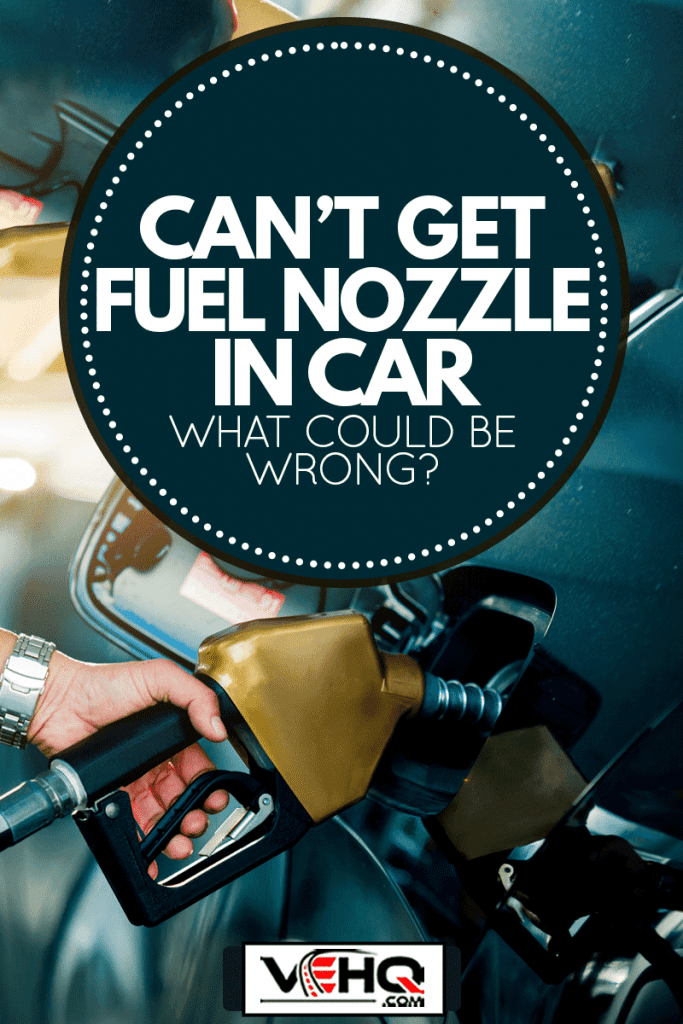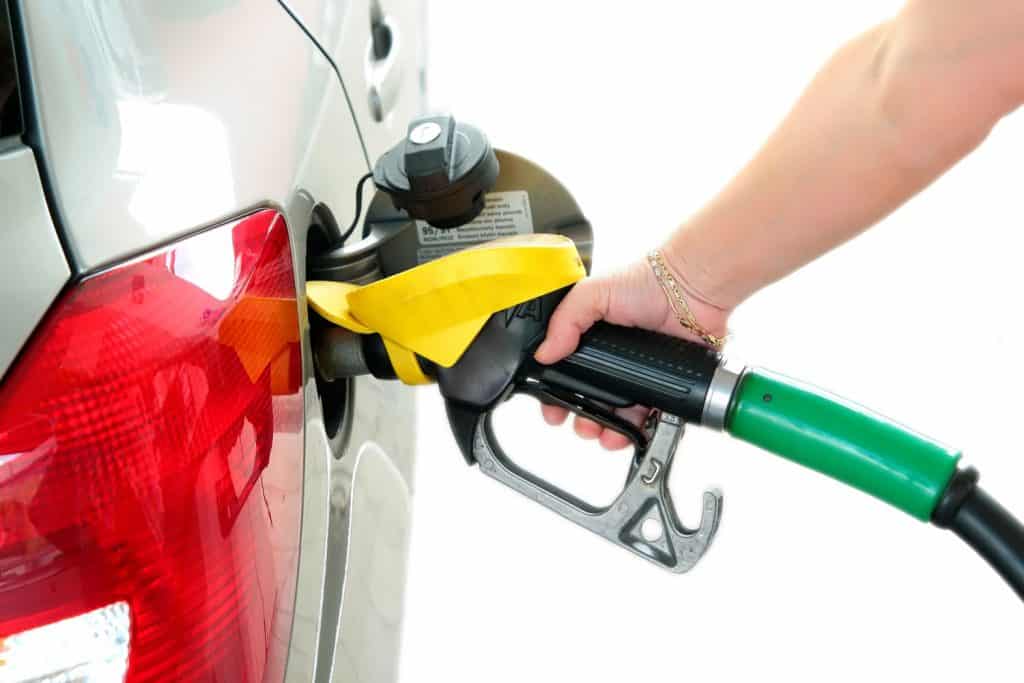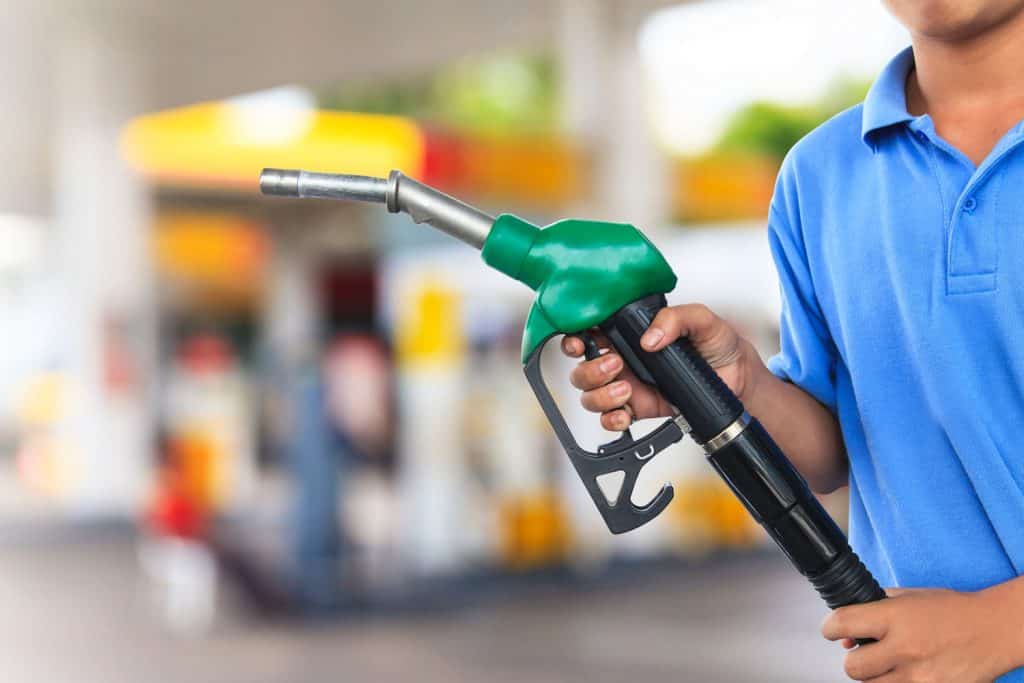Have you ever gone to get gas but couldn't seem to insert the fuel nozzle properly? Of course, you'd be wondering what's wrong with your car, and that's what we'll talk about today. We've consulted with automotive experts on this issue, and here's their explanation.
If your vehicle has a capless fuel system, the small flap that seals the tank might be damaged. If your vehicle has a capped fuel system, the fuel filler neck could be damaged or warped in some way, preventing the nozzle from inserting properly. Or, you might simply be trying to insert the fuel nozzle at a slightly wrong angle.
If you still have more questions, don't worry. In this post, we'll elaborate on the topic in more detail. We'll talk about what causes premature shut-off of your gas nozzle and how the nozzle works. We'll also discuss other matters related to refueling, so let's get started!

How Do I Know If My Fuel Filler Neck Is Bad?
First, let's discuss the fuel filler neck and where it is located. It is considered the fuel's main point of entry into your vehicle. It connects the gas nozzle to your car's fuel tank. As fuel flows through the neck, it goes down into the tank and fills it up with gas.
When you can't get the gas nozzle to fit into your filler neck, there could be a blockage. Check to see if there's some dirt or debris that has been stuck in there that's keeping the nozzle from getting through. You can use a long thin rod to poke on the tube.
If that still won't do, you can check the condition of your filler neck. It is usually made of rubber or metal. While these materials are durable, they will also wear out over time, especially with continuous use and exposure to the elements.
When this happens, the fuel nozzle from the gas station won't fit in there properly preventing you from refueling.
Luckily, there are some telltale signs that will let you know that you've already got a bad fuel filler neck. Here are some of them:
- Lingering fuel smell. It isn't normal when you can still smell fuel long after you've had your gas filled. It can be a sign that there's a leak in your fuel filler neck.
- Check Engine light is on. Your vehicle has sensors that can detect gas leaks to ensure your safety.
- Fuel leaks. You will notice leaks from the side of your car where your fuel filler neck is located.
When you encounter these situations, have your car checked by a professional technician to address the issue immediately and prevent safety hazards.
When Filling My Gas Tank Nozzle Shuts Off?

It is such a hassle when your gas tank nozzle keeps shutting off as you're pumping gas, right? This understandably leaves you wondering what could be wrong with your car.
Experts say that it all comes down to your pump. Gas pumps have been designed with a mechanism that automatically shuts off the valve at the end of its nozzle once it detects that there is no more air that passes through. In other words, it can detect when the tank is full.
But when it shuts off prematurely or before your tank is full, the culprit could be the pump itself or its shut-off sensor in particular.
There could be something that's blocking the hole in the nozzle. It could be the fuel that splashed into the hole or some debris found its way into the hole, covering it momentarily.
When this happens, air can't pass through, which is why your gas pump thinks that the tank is already full. The sensor will then shut off the pump.
This is a common problem among smaller vehicles since the fuel pipes that lead into the gas tanks are shorter. The fill pipe cannot handle the fast flow of the fuel causing a blockage. It then triggers the valve to shut off prematurely.
If this is indeed the case, it can be solved by pumping gas at a slower rate. You can also change the position of the nozzle so it won't be submerged in gasoline. Or you can try going to another gas station that has slower-flowing pumps.
How Does Gas Nozzle Know When Tank Is Full?

Gas pumps seem to know when your tank is already full and immediately stop pumping more gas into your tank.
They have been specifically designed to automatically stop pumping more gas into your tank as soon as it detects that the tank is already full. There is science behind this which is called the Venturi effect.
There's a small hole at the tip of the gas nozzle, and there's a small pipe in there that's connected to the handle.
The Venturi tube is located in the handle. It is responsible for exerting suction and measuring the airflow rate. As it sucks air, a vacuum is created that pulls the valve open as air passes through.
When your gas tank is not yet full, the hole is able to draw up air easily. But as the gas fills up the tank, it gets harder to suck air as the gas now blocks the hole.
When the tank is full, there's a mechanism in the handle that's able to detect the change in suction or air pressure. When there's no more air passing through, the vacuum releases the valve in the nozzle, causing it to shut off.
This explains why the gas pump stops automatically when you have already reached the full tank. It's a mechanical genius, right?
How Do You Know If You Overfilled Your Gas Tank?
If you've been paying attention, you will hear a distinct clanking sound when your gas tank is full. This sound is made by the valve that shuts off when there's no more air that's able to pass through its hole. This is your signal that your tank is full.
However, there are some who intentionally overfill their gas tanks, thinking they can put more fuel into them. This is called topping off.
But since the valve automatically closes when the gas tank is full, this can result in gas spilling out of your tank or some of it just getting sucked back into the nozzle. So you're paying for "more gas," but you don't actually get it.
Topping off gas isn't advisable. Aside from being a waste of money, it can also potentially damage your vehicle.
If you keep pumping gas even if your tank is already full, fuel will be redirected elsewhere. There's an overflow tube that can course it through the ground, but this is hazardous. It can cause a fire!
Our vehicles also conveniently come with a fuel vapor canister that traps in gasoline vapors and also helps in regulating the air pressure in the fuel tank. Excess fuel can be diverted here. But since it's meant to handle vapors, the liquid fuel shouldn't really be in there.
If this continues to happen, it can cause damage to the system. You will also see the Check Engine status on your dashboard.
This warns you that something is wrong which could require you to have certain parts replaced and it can be costly. Repair and replacement costs can range between $200 and $1,500.
Do You Turn Your Car Off When Getting Gas?
![Filling the gas tank of a vehicle, What Are Fuel Tanks Made Of? [Everything You Need To Know!]](https://vehq.com/wp-content/uploads/2021/10/Filling-the-gas-tank-of-a-vehicle.jpg)
You should never leave the engine running when pumping gas. You should park your vehicle close to the gas pump and then switch off the engine.
The main reason behind this is for your own safety. As you're refueling, your gas tank is open, and explosive vapors are released into the air. All it takes is one spark and it can ignite.
It can also cause the Check Engine light to flash on your dashboard. You might be confused about the sudden reminder.
Our vehicles come with sensors that are able to detect changes in pressure and possible gas leaks. They may recognize the vapor coming out of the gas tank as a potential danger.
It's not only the car engine that you need to turn off but other power sources as well. This includes your cigarette lighters and phone chargers. Unplug everything when you're getting gas to avoid generating static electricity.
Is It Bad To Get Gas On Your Car Paint?
Gas has been known to be an effective paint remover. DIYers use it whenever there's an ugly paint job that they want to remove. As for your car's paint, you would want to protect it from gas given this information.
But car paints nowadays are made of more durable material that can withstand the effects of gas. The paint job won't easily be damaged when you've accidentally spilled some gas on your car's exterior.
However, gas can leave an unsightly stain on your vehicle, and if left unattended, those stains can be quite hard to remove.
That's why you have to be careful when you're filling up your fuel tank. Do not let it overflow. But when it happens, you can simply clean it using water and some mild soap as soon as you can.
You can also spray an instant detailer on the surface then wipe it off using a microfiber cloth. Having your car waxed regularly also gives it protection from gas spills.
Check out this product on Amazon.
To Wrap Up
Make sure nothing's blocking the gas nozzle so that you can fill up your gas tank without any inconvenience. Make it a habit to check for leaks because safety should always be your top priority.
For some related reading, take a look at the following posts:

